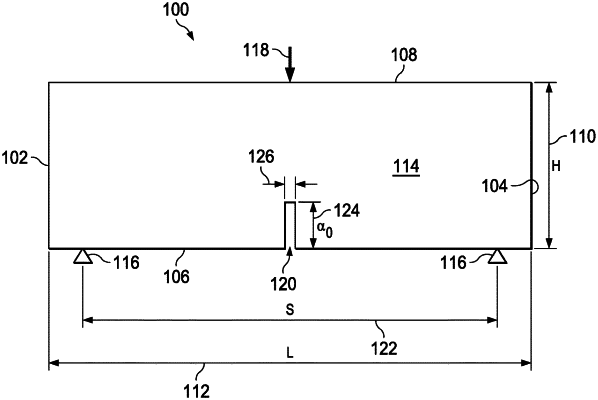| CPC G06F 30/23 (2020.01) [G01M 5/005 (2013.01); G01N 3/40 (2013.01); G06F 30/17 (2020.01)] | 23 Claims |

|
1. A computer-implemented method, comprising:
performing laboratory testing of at least two single edge notched beam (SENB) test samples formed from formation rock by:
loading a first SENB test sample of the at least two SENB test samples in a direction perpendicular to one or more bedding layers of the formation rock of the first SENB test sample, and
loading a second SENB test sample of the at least two SENB test samples in a direction parallel to one or more bedding layers of the formation rock of the second SENB test sample;
recording laboratory testing data obtained from the laboratory testing;
for each SENB test sample of the at least two SENB test samples:
determining one or more elastic parameters of a material representing the formation rock by performing a first set of one or more simulations on a numerical model corresponding to the respective SENB test sample and determining when a first variance between a linear-elastic segment of a load-displacement curve generated from simulation data of the first set of one or more simulations and a linear-elastic segment of a load-displacement curve generated from the laboratory testing data is within a first predetermined level or correlation;
determining an ultimate tensile strength of the material representing the formation rock by estimating an ultimate tensile strength of the material representing the formation rock based on a peak load of the laboratory testing data, performing a second set of one or more simulations on the numerical model corresponding to the respective SENB test sample using the determined one or more elastic parameters, and determining when a second variance between a peak of a load-displacement curve generated from simulation data of the second set of one or more simulations and a peak of the load-displacement curve generated from the laboratory testing data is within a second predetermined level or correlation; and
determining one or more plastic parameters of the material representing the formation rock by performing a third set of one or more simulations on the numerical model corresponding to the respective SENB test sample using the determined one or more elastic parameters and the determined ultimate tensile strength, and determining when a third variance between a crack-propagation segment of a load-displacement curve generated from simulation data of the third set of one or more simulations and a crack-propagation segment of the load-displacement curve generated from the laboratory testing data is within a third predetermined level or correlation;
wherein the determined one or more elastic parameters, the determined ultimate tensile strength, and the determined one or more plastic parameters for the at least two SENB test samples represent linear-elastic behavior, peak loading behavior, and crack-propagation behavior of the formation rock for both perpendicular loading and parallel loading of the formation rock.
|